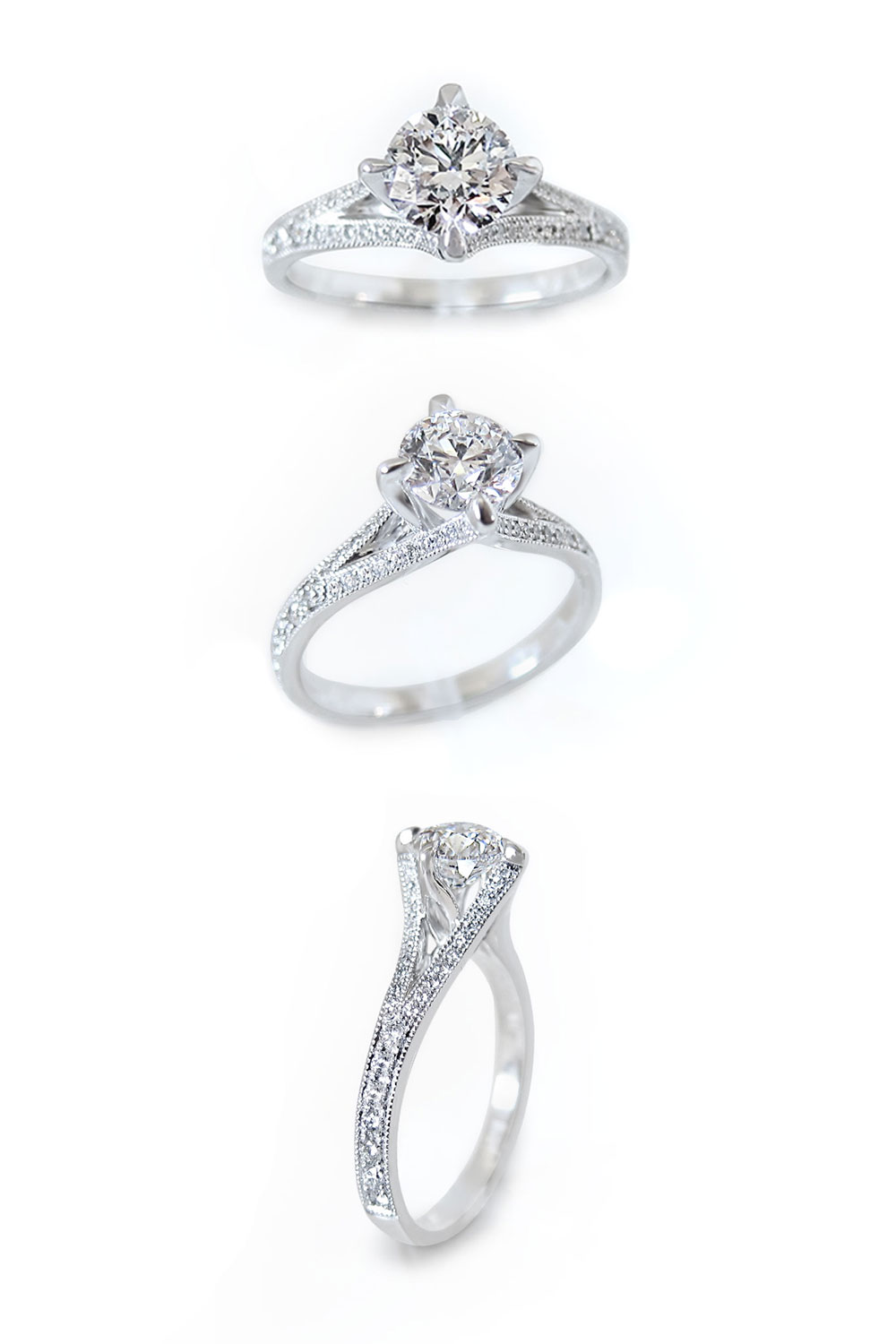It’s undeniable. A diamond is one of the world’s most coveted gemstones. And with its sparkle, hardness and durability, it’s easy to see why. But with growing awareness about conflict or blood diamonds, and as society becomes increasingly environmentally conscious, more and more people are questioning whether diamonds are actually an ethically sound choice.
Enter lab grown diamonds (otherwise known as lab created or synthetic diamonds). With all the sparkle and durability of their earth-made counterparts, it’s not surprising that these human-made alternatives have surged in popularity in engagement rings, wedding bands and other modern jewellery designs.
But what is the difference between a lab grown diamond and a mined diamond? Which is more ethical? What are sustainability rated diamonds? And the ultimate question: Are lab created or natural diamonds better?
Fair warning, the answers aren’t always straightforward, but even if there may not be a conclusive “right answer”, there may be a right answer for you.
Here are the facts.
Are lab grown diamonds real diamonds?
First up, let’s get the big question out of the way. Yes, lab grown diamonds are totally and unequivocally real diamonds.
They have the same composition, look the same, are just as durable and are just as sparkly as mined diamonds. The only difference is that lab grown diamonds are created in a lab over days or weeks, rather than by the earth over billions of years.
A lab created diamond is not a “fake diamond” and it’s not a simulant like cubic zirconia, which is created to imitate the look of a diamond, but isn’t actually a diamond.
The diamonds in the image below are lab grown. As certified and independently graded diamonds, they come with a diamond report and are identifiable as lab grown diamonds through a tiny laser inscribed code that can only be seen under magnification. This is similar to the report numbers inscribed on certified mined diamonds, which allow you to identify individual stones and link them to their diamond reports. Not all mined and lab grown diamonds are laser inscribed, so it’s important to purchase your diamonds from a reputable source to ensure you’re not purchasing one thing and getting another.

Are lab created diamonds cheaper?
Most certainly! A lab created diamond is generally around 30% lower in price than a mined diamond of the same size, shape and quality. So if budget is top of mind, lab grown may be the winner.
One thing to note is that lab grown diamonds are not as readily available in a range of sizes and shapes as mined diamonds (at least at this time).
Are lab grown or mined diamonds more sustainable? We’re not sure.
For those of you searching for sustainably-made jewellery, this is the ultimate question. Outside of sustainability rated lab created diamonds (which we’ll discuss later), the majority of lab created diamonds on the market may not be as environmentally friendly as you think.
In fact, the United States’ Federal Trade Commission has cautioned several jewellery brands against the use of unqualified “eco-friendly” and “sustainable” claims in their marketing around lab grown diamond jewellery.
The downside to lab grown diamonds is that they require a huge amount of (often coal-powered) energy to produce and therefore have a large carbon footprint. Industry reports have published conflicting information about whether the carbon footprint of lab grown diamonds is higher or lower than mined diamonds.
The diamond mining industry has its own challenges, including damage to ecosystems, displacement of local communities and significant water and energy consumption. Efforts are being made to reform the industry. These efforts include increasing transparency in the supply chain, enhancing support for local communities and sustainability programs that rehabilitate mine sites after use.
Many communities and countries benefit from the revenue, employment opportunities, social programs and infrastructure brought by diamond mining. However as an industry dominated by a few large players with significant vested interests, transparency and change are not always easy to achieve.
With so many contributing factors, the verdict is still out on whether (non sustainability rated) lab created or mined diamonds are more sustainable. Read on for more info on sustainability rated diamonds.
What about conflict diamonds?
In the debate between lab grown diamonds and mined diamonds, there are ethical considerations other than sustainability to weigh up.
Ever since Leonardo Di Caprio’s movie Blood Diamond hit the screens in 2006, there has been increased awareness about “conflict diamonds” – Diamonds mined in areas controlled by rebel forces and sold to fund wars against legitimate governments.
The Kimberley Process is an initiative created to eliminate the trade of these diamonds. However it doesn’t address issues around exploitation, working conditions or the use of child labour, which are widely reported issues in the diamond mining industry.
For the moment, lab created diamonds aren’t embroiled in issues like these (however there isn’t enough published information about working conditions in diamond labs to say so definitively).
What are sustainability rated diamonds?
Sustainability rated diamonds are certified according to an internationally recognised system, the SCS-007 Jewelry Sustainability Standard, that covers traceability, ethical stewardship, climate neutrality, sustainable production and sustainability investments.
Currently, only a small number of lab grown diamond producers comply with these stringent standards.
While they were developed for both mined and lab grown diamonds, there are so far no mined diamond producers that have stepped up to apply for certification.
How do I decide whether to buy a lab grown diamond or a mined diamond?
As a jeweller, I work with both mined diamonds (always conflict free and sometimes also traceable to the source) and lab created diamonds (sustainability rated where possible).
Whether a lab created diamond or a mined diamond is “better” has to be taken on a case-by-case basis, depending on the priorities of the person it’s destined for.
Weigh up these questions when deciding which is best suited to your needs:
- What kind of diamond are you looking for? While lab created diamonds are plentiful in certain shapes and sizes, they are less available in fancier cuts and in larger sizes. Depending on what you need for your design, you may find a mined diamond is easier to source.
- Is sustainability a priority for you? If so, make sure your diamond is sustainability rated (at the moment, this is only available in lab created diamonds) or opt for a mined diamond that is traceable to the source. Ask for information on how and where your diamond is sourced and any sustainability programs they have in place.
- What is your budget? If you have the funds available (and if that’s what you prefer) a mined diamond may be your stone of choice. If a mined diamond doesn’t fit in your budget, a lab created diamond will give you more bling for your buck.
- And finally, what feels best to you? That your diamond was created by incredible advances in technology? Or that it was created by Mother Nature over billions of years?

Need help deciding?
Get in touch to chat about whether a lab created diamond or a mined diamond might be right for your next piece of custom jewellery. Or enquire about a sustainability rated lab created diamond or traceable mined diamond.




